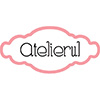Helsinki Design Week is about to start, and before that we wanted to find out more about the creative project from HDW Founder and CEO Kari Korkman. Also, Kari Korkman is the president of World Design Weeks and the founder of Fiskars Village Art & Design Biennale. We are going to be at HDW and we are going to keep you posted about the latest news.
1. Can you please tell us what can we find at the newest Helsinki Design Week? What are the main events that we should see, for sure?
Helsinki Design Week explores the urban environment and seeks for new inspiring venues, partly because it is inspiring and partly because we do not have many permanent exhibition venues. The edition 2019 is a lucky one as we found an empty building right in the heart of the city and were allowed to fill it with exhibitions. “Erottaja2” is a neorenesance palace with five floors and 65 rooms. Definitely worth experiencing. 200 hundred events are placed all around the city but I would especially encourage visitors this year take a metro to the new campus of Aalto University in Otaniemi. The campus area is finally ready and dozens of design, fashion and architecture students exhibit their works for public.
ials Project
2. Helsinki Design week 2019 explores the intersection of design and science, showcasing designers and innovators leading the way in the development of climate-friendly solutions, in your opinion, how can a designer can become a climate friendly entrepreneur? Give us some tips and tricks for a better and sustainable design.
The climate change is the biggest threat to humanity. In my opinion, one cannot become a designer or inventor if lacking optimism for better future and self-confidence. All of us should be greatful for individuals and organizations who keep on working for new more climate-friendly solutions. I am convinced that new environmently friendly solutions are also good business for entrepreneurs because the consumers are ready to reconsider consumption, change their behavior and habbits accordingly. My tip as a consumer is to invest in quality and turn one´s back to so called fast fashion.
3. How was the experience of being the first president for World Design Week network? How do you find the creative industries, now?
The world looked a bit different when we established World Design Weeks three years ago in 2016. As the president of global organization I have to admit that networking has met some challenges and new obstacles lately because of political tensions. However, creative industries flourish only in an environment that promotes openness between different disciplines, nationalities and cultures. That is why World Design Weeks is enabling local design hubs to become internationally connected with each other. Maybe not with massive campaigns but step by step.
4. Do you have a favorite story related to HDW, a story that you can and want to share with our audience?
HDW has been cross-disciplinary from day one in 2005 which helped us to stay annually topical. Some years the center of gravity has been on interior design, sometimes service design or city planning and architecture. The choice of annual themes has supported our means of communication. This year´s “Learning Climate” resonated well among the stakeholders.
Natural Indigo project
5. Helsinki Design Week is a multidisciplinary festival, with block parties, how did you communicate with the creative communities to get involved in HDW?
I may have replied to this in my previous one… We communicate through launching the annual theme, staying in touch with the communities all-year-round and encouraging them to apply for Open Call in spring.
6. How can HDW draw a line between an artist and a designer? What is art and what is design in your opinion?
Drawing a line is difficult because there is a wide grey area in-between art and design. A black and white difference is the fact that a designer starts his project by first specifying the target group, the consumer or other client. This is not the case with a true artist.
7. What are you planning next regarding HDW and the creative industries?
We constantly work in order to engage the creative industries close to our operations. We encourage proactivity and support our stakeholders within the industries to become more visible and louder. We ourselves believe in the benefits of collaborations and cooperation and know we can provide a platform and media that is beneficial to creative industries.
8. Did any architect or designer from Romania got you attention, if yes which one/ ones? And why?
We organized an architecture competition a few years ago and the winner was a young architect from Romania. We became good friends with Alexandru Oprita and still keep in touch. We would love to increase our cooperation with our colleagues in Romania.


















NO COMMENT